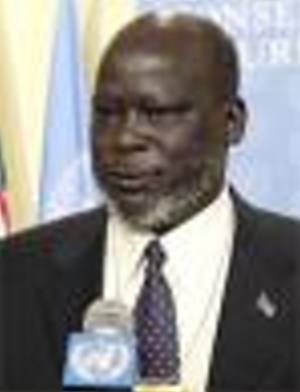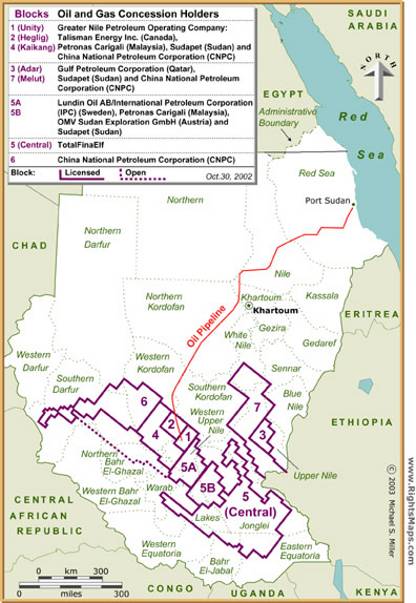
OCTOBER 2005

Garang: Did an argument with Museveni and the U.S., British, and Dutch ambassadors over oil and mineral rights trigger his assassination?
September 16, 2005 -- The most dramatic revelation is that present at Garang's meeting with Museveni were the ambassadors of the United States and the Netherlands and the British High Commissioner to Uganda. These three nations are involved, through Royal Dutch Shell and other oil companies, in exploration in the Great Lakes Region.
U.S. ambassador Jimmy Kolker, a
graduate of Carleton College in Minnesota, has
facilitated a close relationship between Museveni and
Minnesota Republican Senator Norm Coleman (who won his
Senate seat largely as a result of the plane crash that
killed Senator Paul Wellstone). Britain's High
Commissioner Francois Gordon is a former counselor in the
Foreign and Commonwealth Office. J. Brandt, is the Dutch
ambassador. There are reports that Garang argued with
Museveni and the Western ambassadors over oil and mineral
exploration rights in his southern Sudan area, as well as
Sudan in general. Garang was no pushover for the Museveni
and the American, British, and Dutch envoys. With a PhD
in economics, Garang understood the worth of Sudan's
natural resources and what was a equitable for his
people. And as a graduate of the Commander's course at
Fort Benning, Georgia, Garang was also familiar with the
connections between U.S. and British covert and overt
special forces in the region and the oil companies and
mining firms. For Garang, having that kind of knowledge
may have earned him a death sentence.

One thing The Constant Gardener (The screen adaptation of John Le Carre's thriller, The Constant Gardener,) will do is focus the world's attention on the Anglo-U.S. conspiracies that result in assassinations and genocide in Africa. Currently, there are plenty of fingers pointing at Washington and London (and their clients in East Africa) in the assassination of Sudan's First Vice President and Sudan People's Liberation Movement (SPLM) head Dr. John Garang.
In July, Garang was killed in the crash of a Ugandan Belarusian-supplied helicopter belonging to Ugandan President and U.S. military ally Yoweri Museveni. Suspiciously, Museveni immediately clamped down on the Ugandan press after they speculated that Garang was killed in a carefully-planned conspiracy. Garang had just spent nearly two days at Museveni's rural estate and after the chopper went missing, Museveni's government remained mum about the circumstances surrounding Garang's missing status. After Garang's body was recovered, Museveni, without permission from Khartoum, flew into Yei, Sudan to view Garang's corpse. Then Museveni sought to stoke conspiracy claims by suggesting that Garang's plane may have been shot down -- a clear attempt to implicate Sudan and the SPLM. It is also suspicious that the United States sent investigators to the scene -- Washington had no role in the affair other than possible involvement in the aerial assassination. The helicopter was Russian-made (therefore Russian investigators appeared on the scene). In addition, other principal players -- Uganda, Sudan, and Kenya (the latter brokered the Sudan peace accord) -- all sent investigators.
There are other inconsistencies with
Garang's death. Seventeen bodies were recovered from the
crash site yet the passenger manifest only listed 14. The
United Nations confirmed 17 bodies. There were reports
that Rwandan intelligence agents sneaked on to the
helicopter and may have been involved in the
"hit" on Garang. Rwanda currently has
"peacekeeping" troops in the Darfur region of
Sudan and its leadership planned and executed the 1994
aerial assassination of the Presidents of Rwanda and
Burundi following a peace summit in Tanzania. What is
more suspicious are reports that Garang's helicopter
landed at Old Entebbe Airport to pick up additional
"passengers" after it departed Museveni's home
on its way back to Sudan. Old Entebbe Airport has, for
quite some time, been a base for U.S. Special Forces and
P-3 Orion naval surveillance planes operating in East
Africa
